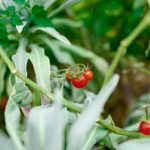What are considered fall vegetables for gardens? As the weather cools down, many gardeners are eager to start planting their fall crops. Fall vegetables are not only suitable for planting during this season but also offer a wealth of benefits, from better crop quality to increased pest resistance.
In this article, we will explore the concept of fall vegetables and why they are ideal for planting in gardens during the autumn months. Additionally, we will discuss popular fall vegetables, planting and care tips, garden design ideas, extending the growing season, and even share some delicious recipes featuring these seasonal delights.
Fall gardening brings with it a myriad of advantages that make it an attractive option for many home gardeners. With cooler temperatures and consistent moisture levels, fall gardens often produce higher quality crops with less supervision required. The cooler weather also tends to deter common pests and diseases that can plague summer gardens. As such, knowing which vegetables thrive in the fall can help maximize your garden’s productivity during this time of year.
In this article, we will delve into popular fall vegetables that you can grow in your garden, including carrots, broccoli, and kale. We’ll provide detailed instructions on how to plant and care for them as well as explore different garden layouts and designs that work best for growing these seasonal treats.
We’ll also offer tips and techniques for extending the growing season of fall vegetables so you can enjoy a bountiful harvest well into the colder months. So if you’re ready to embrace all that fall gardening has to offer, keep reading to learn more about incorporating these fantastic veggies into your garden planning.
Benefits of Fall Gardens
Fall gardens offer several benefits that make them an excellent choice for gardeners looking to extend their growing season. One of the key advantages of growing fall vegetables is the better crop quality that they provide.
Because many plants thrive in cooler temperatures, fall vegetables often have improved flavor and texture compared to those grown in the heat of summer. For example, carrots and kale are known to be sweeter after being exposed to frost, making them ideal choices for fall cultivation.
In addition to enhanced crop quality, fall gardens also benefit from increased pest resistance. Many common garden pests, such as aphids and cabbage worms, are less active in the cooler months, reducing the risk of infestation on fall vegetables. This natural pest control makes it easier to grow these crops without relying on chemical pesticides, promoting a healthier and more sustainable gardening practice.
Another advantage of fall gardening is the ability to make use of available space during a time when many other plants have finished producing. By planting cool-weather vegetables like broccoli and Brussels sprouts once summer crops have been harvested, gardeners can maximize their garden’s productivity and enjoy a continuous harvest throughout the year.
| Benefits | Data |
|---|---|
| Better Crop Quality | Enhanced flavor and texture compared to summer-grown vegetables. |
| Increased Pest Resistance | Natural reduction in pest activity leads to less infestation and reduced need for chemical pesticides. |
| Maximized Garden Productivity | Allows for continuous harvests by utilizing available space after summer crops. |
Popular Fall Vegetables
When it comes to planting a fall garden, choosing the right vegetables is essential for a successful harvest. There are several vegetables that thrive in the cool temperatures of autumn and can add a bountiful variety to your garden. Here are some popular fall vegetables to consider planting for your autumn garden:
- Carrots: Carrots are a versatile vegetable that can be sown directly into the ground in late summer for a fall harvest. They prefer the cooler temperatures of autumn and can even become sweeter after a light frost.
- Broccoli: Broccoli is another excellent choice for a fall garden. It thrives in cooler weather and can be planted in late summer for a delicious fall harvest. With proper care and maintenance, broccoli plants can produce large, flavorful heads just in time for autumn.
- Kale: Kale is known for its hardiness and ability to withstand chilly temperatures, making it an ideal crop for a fall garden. This leafy green vegetable can be planted in mid-summer and will continue to provide abundant leaves well into the fall months.
These popular fall vegetables not only offer delicious flavors but also provide essential nutrients for you and your family. By incorporating these veggies into your fall garden, you can enjoy fresh, homegrown produce throughout the autumn season.
It’s important to note that while carrots, broccoli, and kale are popular choices for fall gardens, there are many other vegetables that thrive in cooler weather. Some additional options to consider include Brussels sprouts, cabbage, cauliflower, Swiss chard, and radishes.
Each of these vegetables has its own specific planting requirements and care needs but can all contribute to a thriving fall garden when given proper attention and maintenance. Whether you’re an experienced gardener or new to the world of growing your own food, experimenting with different types of fall vegetables can lead to a diverse and rewarding harvest.
Planting and Care Tips
When it comes to planting fall vegetables in a garden setting, there are several important factors to consider in order to ensure a successful harvest. From selecting the right varieties to proper care and maintenance, here are some detailed instructions on how to plant, maintain, and harvest fall vegetables.
Selecting the Right Varieties
One of the key aspects of planting fall vegetables is choosing the right varieties that are well-suited for the cooler temperatures and shorter daylight hours of the season. Look for cold-hardy vegetables such as kale, Brussels sprouts, and winter squash which can withstand frost and continue growing even as temperatures drop.
Soil Preparation and Planting
Before planting fall vegetables, it’s essential to prepare the soil by adding organic matter such as compost or well-rotted manure to improve its structure and fertility. Additionally, make sure to space out the plants properly to allow for adequate air circulation and sunlight exposure. Consider using a layer of mulch to insulate the soil and regulate its temperature during fluctuating weather conditions.
Maintenance and Care
Regular watering is crucial for fall vegetable gardens, especially during dry spells when rainfall may be scarce. Keep an eye out for common pests and diseases that tend to thrive in cooler weather, and take preventive measures such as applying organic insecticides or using row covers when necessary. Additionally, regular weeding is important to prevent competition for nutrients and ensure the healthy growth of your fall vegetables.
By following these planting and care tips, gardeners can maximize their chances of success when growing fall vegetables. With proper attention and maintenance, a bountiful harvest of nutritious produce can be achieved even as summer transitions into autumn.
Fall Garden Design
When it comes to planning a fall garden, the design and layout play a crucial role in the success of growing vegetables during this season. By exploring different garden layouts and designs, gardeners can optimize their space, improve crop yield, and promote overall plant health. This section will delve into various design options that work best for growing fall vegetables, including companion planting and raised beds.
Companion Planting for Fall Vegetables
Companion Planting Guidelines
One effective approach to fall garden design is companion planting, which involves growing different types of plants together to benefit one another. For example, planting onions alongside carrots can help deter carrot flies. Additionally, mixing basil with tomatoes can improve the flavor of the tomatoes while deterring pests. Understanding which plants complement each other and which ones should be kept apart is essential for successful companion planting.
Complementary Plant Pairs
Some popular complementary plant pairs for fall gardens include planting garlic near cabbage to repel pests, pairing peas with radishes to enhance soil fertility, and growing lettuce alongside beets to maximize space within the garden bed. When utilizing companion planting in fall garden design, it is important to consider the specific needs of each plant and how they can support or protect one another throughout the season.
Raised Beds for Fall Vegetables
Benefits of Raised Beds
Another effective approach to fall garden design is using raised beds to grow vegetables. Raised beds offer several benefits such as improved drainage, better soil quality control, reduced weed growth, and easier access for maintenance and harvesting. These advantages make raised beds an ideal option for growing a variety of fall vegetables in a controlled environment.
Optimizing Raised Bed Layouts
When designing a fall vegetable garden using raised beds, it’s important to consider the layout for optimal results. Grouping plants with similar watering requirements together can streamline maintenance efforts while maximizing water efficiency. Additionally, arranging taller plants towards the back of the bed can prevent overshadowing smaller or more compact crops. By carefully planning the layout of raised beds in a fall garden setting, gardeners can create an organized and productive growing space.
Extending the Growing Season
One of the challenges that gardeners face when growing fall vegetables is the shorter days and cooler temperatures that come with the changing season. However, there are several effective tips and techniques for extending the growing season of fall vegetables, allowing for a longer harvest period and increased yields. Two popular methods for protecting plants from frost and cold weather are using row covers and cold frames.
Row covers are lightweight, breathable fabric barriers that can be placed directly over crops to provide protection from the elements. They help to trap heat around the plants during cool nights, creating a warmer microclimate that can help extend the growing season well into the fall months. Row covers also offer some pest protection, making them a versatile tool for any garden.
On the other hand, cold frames are bottomless glass or plastic structures that are used to cover plants. They work by effectively trapping sunlight and heat during the day, creating a warm environment within the frame. This allows for earlier planting in spring and extended harvesting in fall by providing plants with a more stable microclimate. Cold frames can be especially useful for tender vegetable varieties that are sensitive to colder temperatures.
By employing these techniques, gardeners can successfully extend the growing season of their fall vegetables and enjoy fresh produce well into autumn. With proper planning and care, it is possible to maximize the potential of a fall garden and reap its benefits for an extended period.
| Tips | Techniques |
|---|---|
| Use row covers | Lightweight fabric barriers to protect from frost |
| Cold frames | Bottomless glass or plastic structures to trap heat |
Recipes and Cooking Ideas
When it comes to fall vegetables, there are numerous delicious and healthy recipes that feature the bounty of the season. From hearty stews to savory roasted dishes, fall vegetables can be used in a variety of creative ways to create satisfying meals for the entire family. Here are some ideas for incorporating fall vegetables into your cooking:
1. Roasted Root Vegetables: One popular way to enjoy fall vegetables is by roasting a combination of root vegetables such as carrots, parsnips, and turnips. Toss them in olive oil, sprinkle with herbs like rosemary and thyme, and roast until they are caramelized and tender. This simple dish makes a perfect side for any autumn meal.
2. Butternut Squash Soup: Butternut squash is a classic fall vegetable that is perfect for making creamy and comforting soups. Blend roasted butternut squash with onions, garlic, and vegetable broth for a smooth and velvety soup that will warm you up on chilly evenings.
3. Kale and Apple Salad: For a lighter option, consider creating a fresh kale salad with crisp apples, toasted walnuts, and a tangy vinaigrette dressing. The combination of sweet and savory flavors along with the crunch of the apples adds an interesting twist to this nutritious salad.
In addition to these recipes, there are countless other ways to incorporate fall vegetables into your cooking. Experimenting with different flavor pairings and cooking techniques can lead to discovering new favorite dishes that celebrate the abundance of the season’s harvest. So whether you’re looking for comforting warmth or vibrant freshness in your fall meals, there’s no shortage of options when it comes to cooking with fall vegetables.
Conclusion
In conclusion, fall vegetables are an essential component of garden planning for several reasons. They offer numerous benefits, including better crop quality and increased pest resistance, making them an ideal choice for gardeners looking to extend their growing season. By choosing popular fall vegetables like carrots, broccoli, and kale and following proper planting and care tips, gardeners can enjoy a bountiful harvest throughout the autumn months.
Furthermore, incorporating fall vegetables into garden design not only adds aesthetic appeal but also allows for companion planting and raised beds, which maximize space and promote plant health. Extending the growing season of fall vegetables is also achievable with the use of row covers and cold frames, allowing for a longer period of harvest.
With delicious recipes and cooking ideas featuring fall vegetables, gardeners can fully enjoy the fruits of their labor both in the garden and on the dining table.
Overall, including fall vegetables in garden planning is crucial for any gardening enthusiast. Their numerous benefits, diverse planting options, and extended growing season make them a valuable addition to any garden. With proper care and attention to detail, growing fall vegetables can be a rewarding experience that yields healthy produce for everyone to enjoy.
Frequently Asked Questions
What Vegetables Should Be Planted in the Fall?
In the fall, it is ideal to plant vegetables that thrive in cooler temperatures, such as broccoli, Brussels sprouts, carrots, cauliflower, kale, lettuce, radishes, spinach, and Swiss chard. These vegetables can withstand the colder weather and still grow well when planted in the fall.
What Vegetables Can You Plant Late Summer Early Fall?
Late summer and early fall are great times to plant vegetables such as beets, carrots, turnips, lettuce, spinach, radishes, kale, and Swiss chard. These vegetables can handle the transition from warm weather to cooler temperatures and will continue to grow as the season progresses.
What Vegetables Are Picked in Fall?
In the fall season, a variety of vegetables are ready to be picked from gardens or farms. Some of these include pumpkins, winter squash (such as butternut or acorn), sweet potatoes, carrots, parsnips, beets, turnips, radishes and various types of greens like kale and collard greens.
These vegetables have had time to mature throughout the summer and are ready for harvesting in the autumn months.

If you’re looking to get into vegetable gardening, or are just looking for some tips on how to make your current garden better, then you’ve come to the right place! My name is Ethel and I have been gardening for years. In this blog, I’m going to share with you some of my best tips on how to create a successful vegetable garden.





